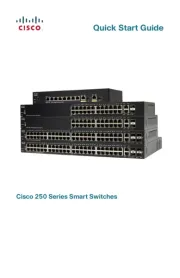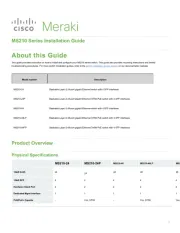Cisco VWIC3-1MFT-T1/E1 Manual
Læs gratis den danske manual til Cisco VWIC3-1MFT-T1/E1 (9 sider) i kategorien Netværkskort/adapter. Denne vejledning er vurderet som hjælpsom af 11 personer og har en gennemsnitlig bedømmelse på 5.0 stjerner ud af 6 anmeldelser.
Har du et spørgsmål om Cisco VWIC3-1MFT-T1/E1, eller vil du spørge andre brugere om produktet?

Produkt Specifikationer
| Mærke: | Cisco |
| Kategori: | Netværkskort/adapter |
| Model: | VWIC3-1MFT-T1/E1 |
| Bredde: | 78.2 mm |
| Dybde: | 120.4 mm |
| Højde: | 19.1 mm |
| Vægt: | 82 g |
| Opbevaringstemperatur (T-T): | -25 - 70 °C |
| Relativ luftfugtighed ved drift (H-H): | 5 - 85 % |
| Relativ luftfugtighed ved opbevaring (H-H): | 5 - 95 % |
| Driftstemperatur (T-T): | 0 - 40 °C |
| Kapabilitet: | Cisco 1921, 1941, 1941W, 2901, 2911, 2921, 2951, 3925, 3945, 3925E, 3945E |
| Antal forbindelser: | 1 |
| Stiktype: | RJ-45 |
| Antal understøttede stemmekanaler (maks.): | 30 |
Har du brug for hjælp?
Hvis du har brug for hjælp til Cisco VWIC3-1MFT-T1/E1 stil et spørgsmål nedenfor, og andre brugere vil svare dig
Netværkskort/adapter Cisco Manualer










Netværkskort/adapter Manualer
- EQ-3
- Kensington
- Speco Technologies
- Renkforce
- Microsoft
- Atto
- IFM
- Code Corporation
- Netgear
- Icy Box
- British Telecom
- Supermicro
- Russound
- Netis
- Sonnet
Nyeste Netværkskort/adapter Manualer









